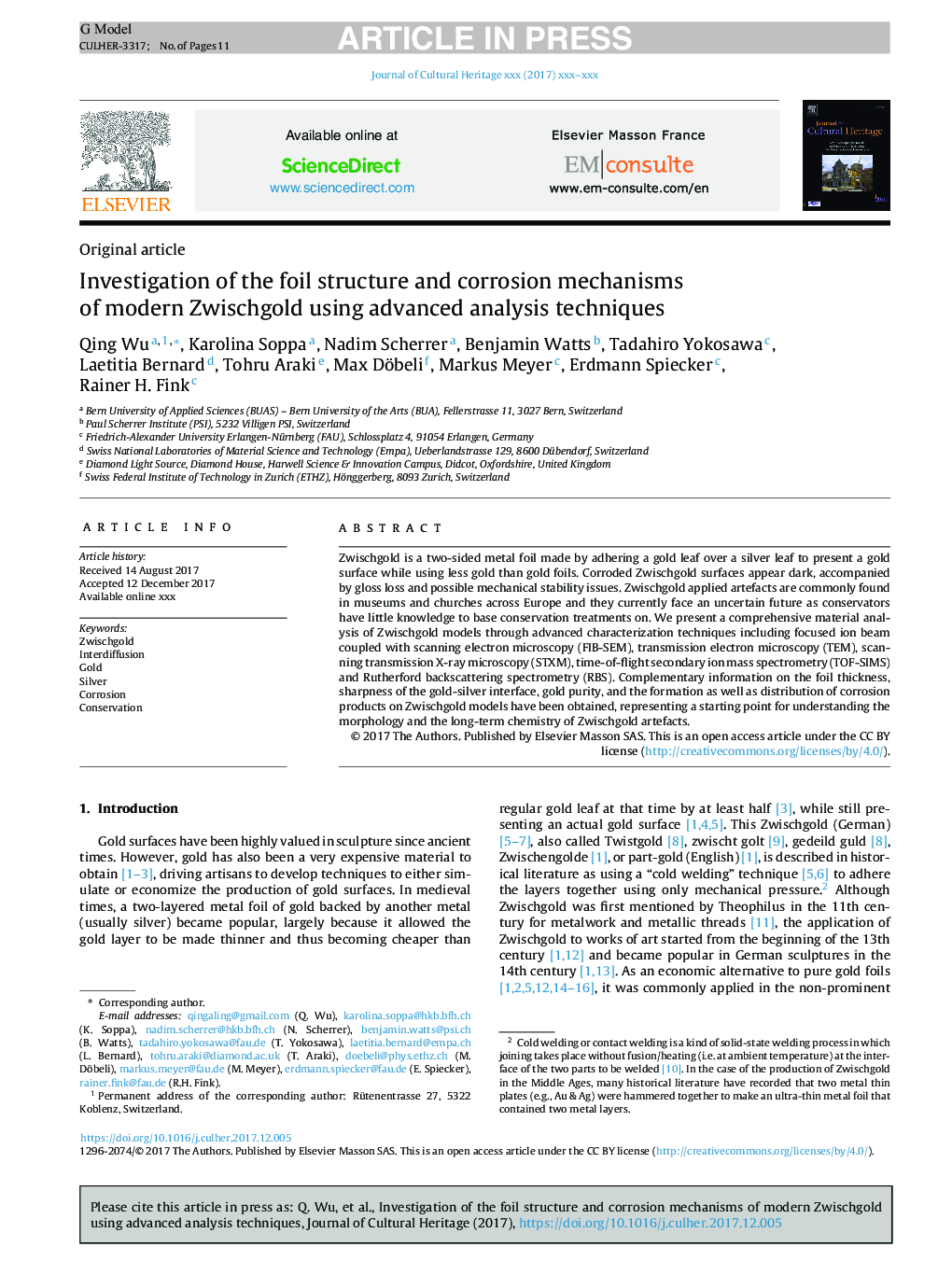| Article ID | Journal | Published Year | Pages | File Type |
|---|---|---|---|---|
| 7446060 | Journal of Cultural Heritage | 2018 | 11 Pages |
Abstract
Zwischgold is a two-sided metal foil made by adhering a gold leaf over a silver leaf to present a gold surface while using less gold than gold foils. Corroded Zwischgold surfaces appear dark, accompanied by gloss loss and possible mechanical stability issues. Zwischgold applied artefacts are commonly found in museums and churches across Europe and they currently face an uncertain future as conservators have little knowledge to base conservation treatments on. We present a comprehensive material analysis of Zwischgold models through advanced characterization techniques including focused ion beam coupled with scanning electron microscopy (FIB-SEM), transmission electron microscopy (TEM), scanning transmission X-ray microscopy (STXM), time-of-flight secondary ion mass spectrometry (TOF-SIMS) and Rutherford backscattering spectrometry (RBS). Complementary information on the foil thickness, sharpness of the gold-silver interface, gold purity, and the formation as well as distribution of corrosion products on Zwischgold models have been obtained, representing a starting point for understanding the morphology and the long-term chemistry of Zwischgold artefacts.
Related Topics
Physical Sciences and Engineering
Chemistry
Physical and Theoretical Chemistry
Authors
Qing Wu, Karolina Soppa, Nadim Scherrer, Benjamin Watts, Tadahiro Yokosawa, Laetitia Bernard, Tohru Araki, Max Döbeli, Markus Meyer, Erdmann Spiecker, Rainer H. Fink,
